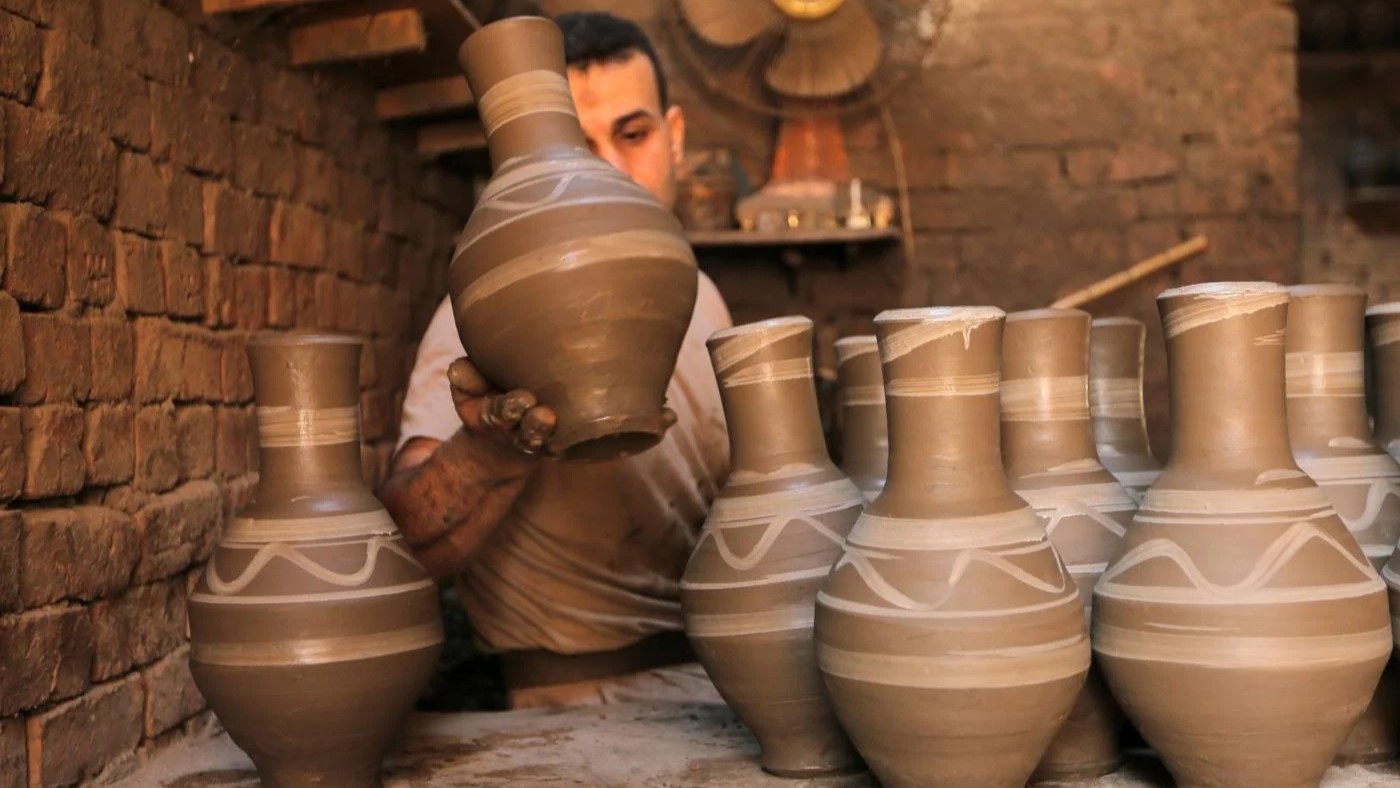Made using traditional methods, these eco-friendly Egyptian clay jars are prized for their ability to keep water fresh.
All over Egypt, orange and brown pitchers are left available to passers-by at street stalls so they can pour themselves a drink when they’re thirsty. These clay vessels, known locally as olla (plural: ollal), have been produced for centuries and known for their ability to keep water fresh longer than others. Produced since ancient times, these jars were also used to store food and liquids, such as oils and perfumes, used in religious ceremonies. Today, the typical olla holds about a liter of water and resembles a vessel, which is characterized by a narrow neck, turning yellow in the middle and with a slightly narrower base. The clay used to make these jars comes from Aswan in southern Egypt. (All photos by Fadel Dawod)

ollala manufacturing has declined in recent years due to the abundance of cheaper plastic alternatives. However, the tradition is kept alive in the town of Jeries (Menoufia governorate), where they are made in traditional workshops.

The jar is formed from a block of clay, then left to dry in the heat of the sun for a day. Once dry, it is baked in the oven for two days, then left to rest for a day to make it more resistant and solid. Despite the time required to manufacture it, the final product is sold for only 15 Egyptian pounds (about 50 euro cents) in the markets.

These clay jars are unique because they are fired at low temperatures and are never glazed. That quality allows warmer water to evaporate from the jar while keeping the temperature of the remaining liquid cool. Typically, clay pots are decorated with lighter colored paint, while some feature religious verses or simple geometric designs.

Rabea al-Sabbagh, 50, has been making ollala for 35 years. He believes that clay pots are better than all alternatives. “They are the best because unlike plastic, they do not degrade and are not dangerous for the environment,” he says. Middle East Eye. Sabbagh learned the trade from his father, who learned it from his. “Ollal is great for water because it’s a healthy way to store it, doctors always recommend using it for drinking,” he adds.

Najah Ghoneim, 32, has worked in the ollala industry for about 20 years. His wife and children also help make the jars. According to him, the damage caused to the environment during the manufacture is limited, because the pottery kiln works using cotton and corn and the clay comes from the environment naturally.

Despite the ubiquity of ollal in Egypt, their creation is a dying art before the influx of modern alternatives. Khaled, a 32-year-old pot maker, laments this: “People now use plastic much more than clay pots, so it’s harder to sell them. » However, he believes that with a few changes, the ceramics industry could eventually keep pace. “We started buying modern gas machines and kilns to make objects from clay that customers buy to decorate their homes,” he explains.

However, not everyone is optimistic about the future of this ancient craft. Ali Hammad fears that the profession will soon collapse due to lack of demand. Like others, he wants the State to intervene to help it develop.

